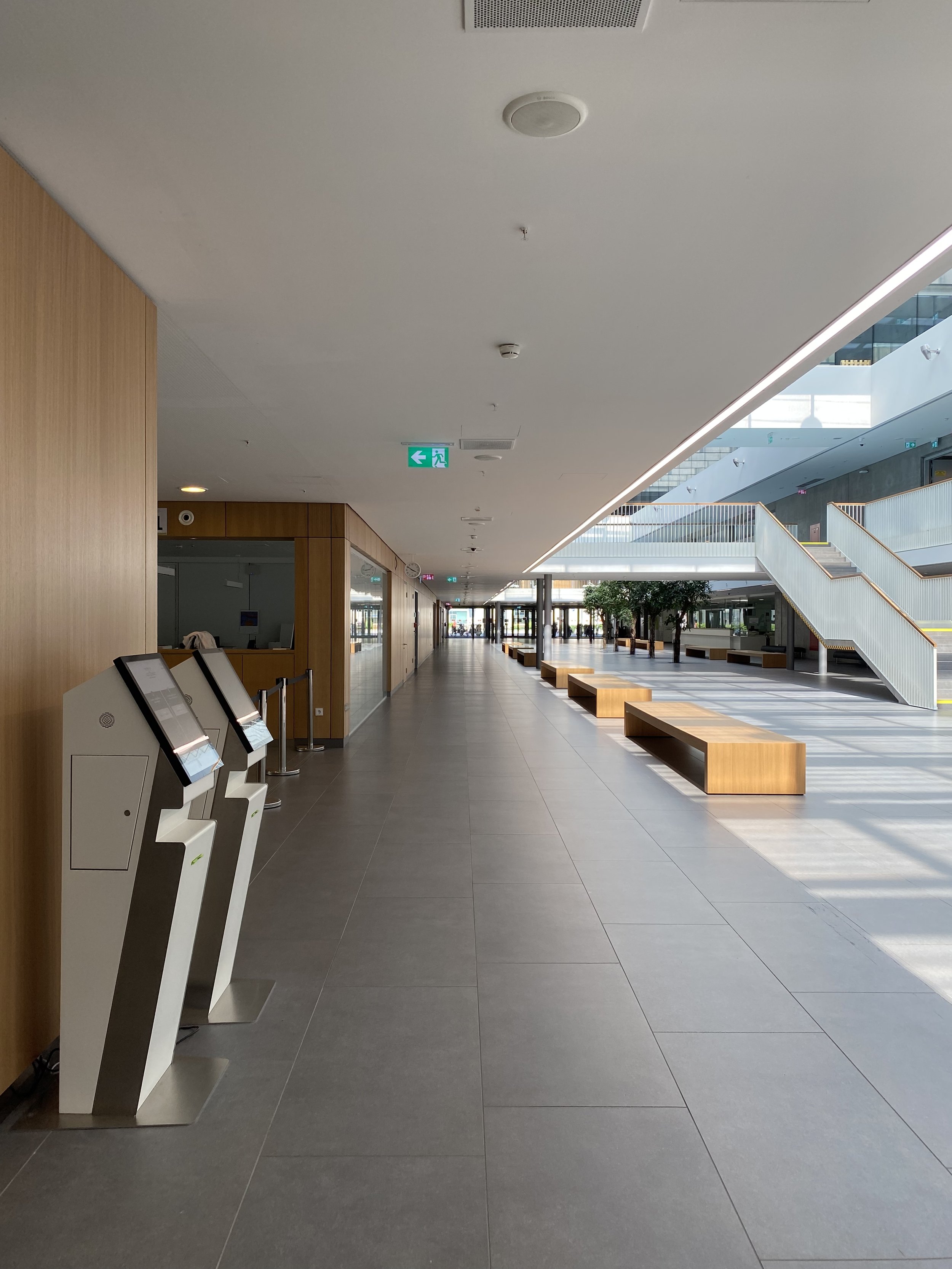
Point of View
Wayfinding Design
for Healthcare is ‘Phygital’
The term 'wayfinding' is used in various contexts and literally means 'finding your way' or 'navigating,' so it's a verb. Environmental psychologists define it more precisely as 'the behavior and thinking needed to navigate both familiar and unfamiliar places.'
However, the term 'wayfinding' is often misused as a noun to describe 'navigation tools,' which creates confusion (e.g., 'we have wayfinding'). As a result, many people incorrectly equate 'wayfinding' with 'signage,' but they are not the same.
Using 'signage' and 'wayfinding' interchangeably leads to a misconception that 'wayfinding design' is just about 'signage design.
Wayfinding Design is so much more than just creating signage
The most critical aspect is Information Design: determining what information to display, when and where to display it, to whom, and through which channel or touchpoint. This extends far beyond just signage; it encompasses conveying and making wayfinding information accessible through many other touchpoints like emails, SMS, websites, and patient portals accessible via mobile devices.
Therefore, when designing for wayfinding in hospitals, we must consider the entire system or ecosystem in which the wayfinding service operates. The design should go beyond addressing individual components and instead consider the interconnectedness and interdependencies of all elements to maximize synergy.
The importance of digitalization and flexibility is increasing
Hospitals worldwide are rapidly adopting digital solutions to enhance patient communication, aiming to empower patients with greater autonomy throughout their healthcare journey. Digital front doors and patient portals are becoming more common, much to the satisfaction of patients. Studies indicate that patients desire effective, personalized communication through digital means. For example, some surveys show that 99% of patients prefer to receive appointment notifications digitally. A top priority for patients is receiving digital information about how to reach their appointments, including details like the specific floor, where to park, etc.
This highlights that digital solutions are a crucial component in the wayfinding design strategy for hospitals. Until now, most wayfinding designers have neglected this digital dimension, traditionally focusing on designs that rely exclusively on physical signage. This approach has become outdated.
Digitalization also offers opportunities to help hospitals address growing operational challenges to keep healthcare affordable. Hospitals need to use their spaces more efficiently, which leads to the implementation of temporary clinics and continuous renovations. These adaptions, necessary for situations like pandemics, require flexibility in the wayfinding information provision.
Wayfinding Design has become 'Phygital'
A wayfinding design that focuses solely on physical elements and neglects the broader communication context is outdated. While signage remains important and must be done well, wayfinding design extends much further and cannot exist without a digital component.
Wayfinding Design is now inherently #Phygital.
